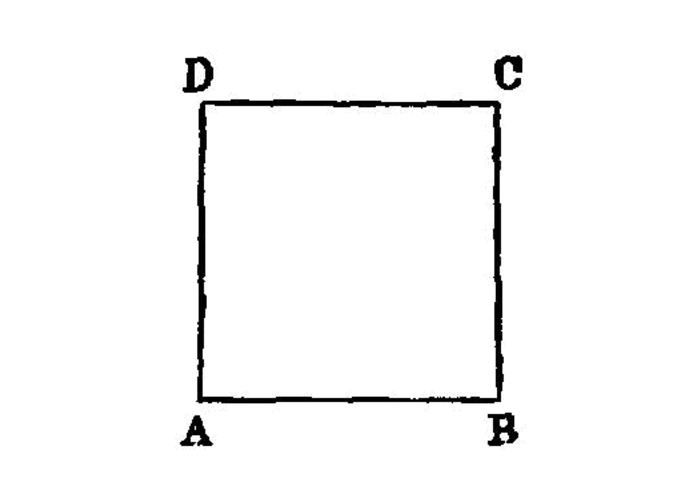Proposition I.46

On a given straight line to describe a square.
Let AB be the given straight line; thus it is required to describe a square on the straight line AB. 1
Let AC be drawn at right angles to the straight line AB from the point A on it I.11, and let AD be made equal to AB; through the point D let DE be drawn parallel to AB, and through the point B let BE be drawn parallel to AD. I.31
Therefore ADEB is a parallelogram;
- therefore
ABis equal toDE, andADtoBE. I.34
But AB is equal to AD;
- therefore the four straight lines
BA,AD,DE,EBare equal to one another;
therefore the parallelogram ADEB is equilateral.
I say next that it is also right-angled.
For, since the straight line AD falls upon the parallels AB, DE,
- the angles
BAD,ADEare equal to two right angles. I.29
But the angle BAD is right;
- therefore the angle
ADEis also right.
And in parallelogrammic areas the opposite sides and angles are equal to one another; I.34
- therefore each of the opposite angles
ABE,BEDis also right. ThereforeADEBis right-angled.
And it was also proved equilateral.
Therefore it is a square; and it is described on the straight line AB.
- Q. E. F.
References
Footnotes
-
construct
Proclus (p. 423, 18 sqq. ) note the difference between the word construct (συστἡσασθαι ) applied by Euclid to the construction of a triangle (and, he might have added, of an angle) and the words describe on (ἀναγράφειν ἀπό ) used of drawing a square on a given straight line as one side. The triangle (or angle) is, so to say, pieced together, while the describing of a square on a given straight line is the making of a figurefrom
one side, and corresponds to the multiplication of the number representing the side by itself. ↩
